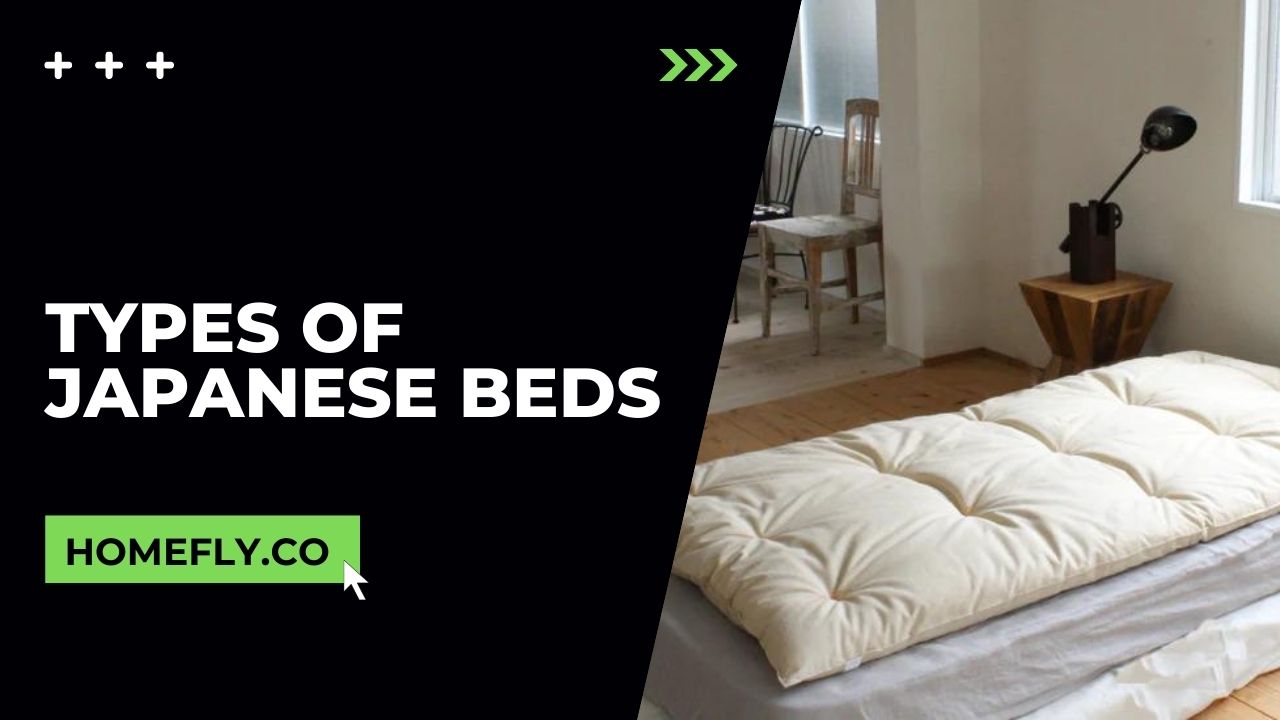Futon mattresses originated in Japan. It is derived from the Japanese word futon, meaning bed. Do you want to know more about Japanese beds?
This article is for you to know the Types of Japanese Beds. Before we proceed, let us first know what a futon is.
Futon Defined
A futon is a bed type made with a Japanese style of sleeping on the ground. It is traditionally known as a bedding system than a bed.
The futon is ideal to use in small apartments and other spaces. It can provide you with comfort and support while sleeping. Japanese beds come in several parts.
What Are the Parts of a Japanese Bed?
A Japanese bed is composed of the following parts:
1. Kakebuton
It was the duvet or comforter. There are many thicknesses and types available on the market.
2. Shikibuton
It was the mattress of the futon bed. It is about 4 inches thick and usually made from cotton.
3. Makura
It was the pillow that came with the bedding in the bed. It is smaller and firmer. The original models are full of buckwheat hulls.
It is believed that buckwheat hull pillows are suitable for treating muscle tension, back pain, neck pain, snoring, headaches, TMJ syndrome, torticollis, sleeplessness, and cervical and lumbar subluxations.
4. Taoruketto and Mofu
These are the blankets in a Japanese futon. The Taoruketto is used during the hot weather, while the Mofu is used for the cold weather.
5. Tatami Mats
This mat serves as Japanese flooring, traditionally used in Japan. It is now used as support for Japanese futons. Its core contains polystyrene foam with woven soft rush straw covering.
6. Platform Bed
This bed embodies the zen principles of simplicity. It is commonly made from non-synthetic materials like particle board.
It helps to make finishing touch to a Japanese-style bedroom.
Types of Japanese Beds
Futon Known as a Japanese bed has different types of futon styles. Here, we will discuss some of the futon styles and their usages:
Traditional Futon:
Lounger Futon: The cushion is designed like a traditional futon bed and is used for both sitting and sleeping. A quality futon will be cozy for both uses and provide years of enjoyment when used for sitting and sleeping. Simple cotton or polyester-filled ones will flatten down with wear, therefore coil springs or pressured foam-filled ones are better.
Bunk Bed Futon:
These are the ideal focal point for any child’s bedroom or dorm room and may be the most inventive and elaborate futon design. They provide seats and two complete beds in a small space by fusing the conventional futon arrangement with a full bunk bed frame.
Outdoor Futon:
Most futons you’ve seen undoubtedly don’t look like this outdoor futon. However, you can utilize it as a bed, a lounger, and a sofa. For reading and afternoon naps, I like it. It comfortably sits two persons and has one bed.
The outdoor futon mattress is independent of the frame, making this a unique convertible futon. This is wise because it’s more probable that you’ll need to sometimes clean the cushions and frame of a futon if you utilize upholstered furniture outdoors.
Why Do the Japanese Sleep on Futon Mattresses?
Japanese sleep on futon mattresses since old age. They believed sleeping on a firm, thick mattress was good for their health. In addition, it is beneficial for the back muscles and backbone.
They also want to sleep in a futon to save space. Japanese sleep in futons at night and store the futon in the daytime. Thus, they use their room for other purposes.
Additionally, they sleep on the mattress due to the earthquake. The country is prone to frequent earthquakes.
Futons are made to evacuate quickly during earthquakes. It is safer for them to sleep on a futon mattress.
How to Use a Japanese Futon?
The Japanese futon is very easy to use. You only need to clear out the space where you want to place the futon.
Then, lay out the mattress and enjoy its comfort.
What Are the Benefits of Using a Japanese Bed?
Using a Japanese futon can offer you many benefits, including the following:
- Good spine alignment
- Better for the back compared to a regular mattress
- Reduce your back pain
- Strengthens your lower back muscles
- Allow your body to turn naturally than stay in a painful position while sleeping
- Cooler temperature
- Eco-friendly
- Improve circulation
- Easy to roll away when not in use
- Space-saving
What Are Some Principles in Japanese Sleep?
Japanese also have some sleeping principles like:
1. Co-sleeping
Families in Japan share two or three big futons in a tatami room. The parents sleep next to their young kids and babies.
2. Napping, Not Just in Futons
Japanese also take naps for a quick recharge. Inemuri is the term for the napping phenomenon in Japanese.
They may nap on the subway, work, or on the park bench.
What Are the Sizes for Japanese Mattresses?
The sizes of Japanese mattresses include:
Single – 97 x 195 cm
Double – 140 x 195 cm
King – 180 x 195 cm
Queen – 152 x 195 cm
How Are Japanese Futons Made?
Usually, Japanese futons come in two to three inches thick. It is pliable to roll up during the daytime and stuffed with cotton.
It is manufactured to last for about 15 years which is a longer lifespan compared to other western mattresses. It is also made with quality to ensure that the sleeper is comfortable and supported.
The Japanese futons are also more eco-friendly because it is made from durable and long-lasting materials.
How Can Japanese Beds Benefit Your Health?
Japanese beds are beneficial for your health. It can help to reduce your back pain or avoid future backache.
It is also reported that it is comfortable for pregnant women, especially when it comes to back pain. You can easily customize the futon with extra layers to increase its comfort.
The Japanese futon is also perfect if you suffer from allergies. It is also ideal for children because there’s no risk of falling as they sleep.
Are a Japanese Futon Good for Your Back?
The Japanese futon comes with enough firmness and supports the sleeper’s body. With this, you can sleep comfortably on the futon.
It is also suitable for the back because of its firm and uneven surface. It will help to reduce your back and body pain. So, you can have a restful sleep which can make you energized on the other day.
How to Maintain Your Japanese Futon?
Japanese futon also needs proper maintenance like other traditional mattresses. With proper care and maintenance, you can extend its comfort and lifespan.
You can air it out in the sun to kill bacteria and avoid moisture. You can also vacuum it to remove contaminating substances that may damage it.
Is It Good to Buy a Japanese Bed?
Yes, buying a Japanese bed can be a good investment if you want a sleeping environment that can offer you a high level of comfort and support. It is also available at a more affordable cost than other regular beds.
Conclusion
To sum it up, Japanese beds are generally comfortable and supportive. So, you can sleep on it without having any issues.
A Japanese futon is more of a bed system than a bed since it comes with several parts, like what we mentioned above. There are also many options, allowing you to choose based on your preference and sleeping needs.
If your Futon Mattress is Sliding, then this article is for you.







